Forums
- Forums
- Duggy's Reference Hangar
- USAAF / USN Library
- THE AF GUARDIAN
THE AF GUARDIAN
Post a reply
- Go to Previous topic
- Go to Next topic
- Go to Welcome
- Go to Introduce Yourself
- Go to General Discussion
- Go to Screenshots, Images and Videos
- Go to Off topic
- Go to Works in Progress
- Go to Skinning Tips / Tutorials
- Go to Skin Requests
- Go to IJAAF Library
- Go to Luftwaffe Library
- Go to RAF Library
- Go to USAAF / USN Library
- Go to Misc Library
- Go to The Ops Room
- Go to Made in Germany
- Go to Campaigns and Missions
- Go to Works in Progress
- Go to Juri's Air-Raid Shelter
- Go to Campaigns and Missions
- Go to Works in Progress
- Go to Skinpacks
- Go to External Projects Discussion
- Go to Books & Resources
-
11 years agoSat Dec 13 2014, 02:52pm
 Main AdminText by Greg Goebel Thanks.
Main AdminText by Greg Goebel Thanks.
The Grumman company developed a number of aircraft that made major contributions to Allied victory in World War II, one being the "TBM Avenger" torpedo bomber. In 1942, the US Naval Bureau of Aeronautics asked the Grumman company about a possible successor bomber. Further discussions led Grumman to initiate development of such a replacement in 1944, to be designated "XTB2F-1". The XTB2F-1 would eventually lead to the Guardian, but through a convoluted path.
The initial concept for the XTB2F-1 was for a multi-seat, carrier-based torpedo bomber with twin Pratt & Whitney (P&W) R-2800-22 Double Wasp radial engines. The XTB2F-1 would be able to carry up to 3,600 kilograms (8,000 pounds) of bombs or torpedoes, and would have an extremely long range of up to 5,950 kilometers (3,700 miles). Unfortunately, the XTB2F-1 proved far too ambitious: the design was simply too big and heavy to be flown off most of the US Navy's aircraft carriers. The XTB2F-1 was canceled in January 1945 in favor of a more conservation option, a derivative of the Grumman F7F Tigercat twin-engine fighter designated the "XTSF-1".
Grumman had also been working on a third design, with the company designation "G-70", for several months, and the Navy found the G-70 attractive. In February 1945 the service decided to abandon the XTSF-1, awarding a contract to Grumman for three G-70 prototypes, with the Navy designation "XTB3F". Two of the prototypes would be "XTB3F-1s" and the third would be an "XTB3F-2". They were to be "mixed-power" aircraft, with a P&W R-2800-6 Double Wasp, providing 1,715 kW (2,300 HP) and fitted in the nose; plus a turbojet fitted in the tail, fed by oval intakes in the leading edges of the wings. The turbojet was to be used to provide boost power for takeoffs and combat emergencies.
The XTB3F-1 would be fitted with a Westinghouse 19XB-2B turbojet, while the XTB3F-2 was to be fitted with a with a Westinghouse 24C-4B turbojet. The two aircraft were otherwise similar, featuring a crew of two, sitting side-by-side; a warload of up to 1,800 kilograms (4,000 pounds) of bombs, torpedoes, or rockets; and twin fixed forward-firing 20-millimeter cannon.
* The initial XTB3F-1 prototype flew on 19 December 1945, with Grumman test pilot Pat Gallo at the controls. The turbojet intakes were masked off because of problems encountered in ground tests; in fact, the jet engine proved to be a bad idea and was quickly removed without ever being used in flight.
On 24 December, the Navy decided that they no longer needed a new torpedo bomber -- it was a generally obsolete concept by that time -- and told Grumman that they wanted a carrier-based antisubmarine warfare (ASW) aircraft instead. The Navy's mainstay in that role was an ASW modification of the Avenger, but something better was desired. There was no way at the time to cram all the necessary ASW gear into a single aircraft, and so two variants of the "Guardian", as it was named, were planned, with the pair to act as a "hunter-killer" team.
The two unbuilt prototypes were adapted towards this end. The single XTB3F-2 prototype was built as the "hunter" member of the team -- without the Westinghouse turbojet engine, but with two more seats for radar operators plus a large ventral radome fitted where the bombbay had been, accommodating AN/APS-20 ocean search radar. This aircraft became the "XTB3F-1S" and first flew on 1 October 1948. The second XTB3F-1 prototype was built as the "killer" member of the team, retaining the bombbay but deleting the cannon, adding a third seat, and being fitted with a searchlight as well as short-range radar. This aircraft became the "XTB3F-2S" and first flew in January 1949, with both aircraft performing naval flight tests in February.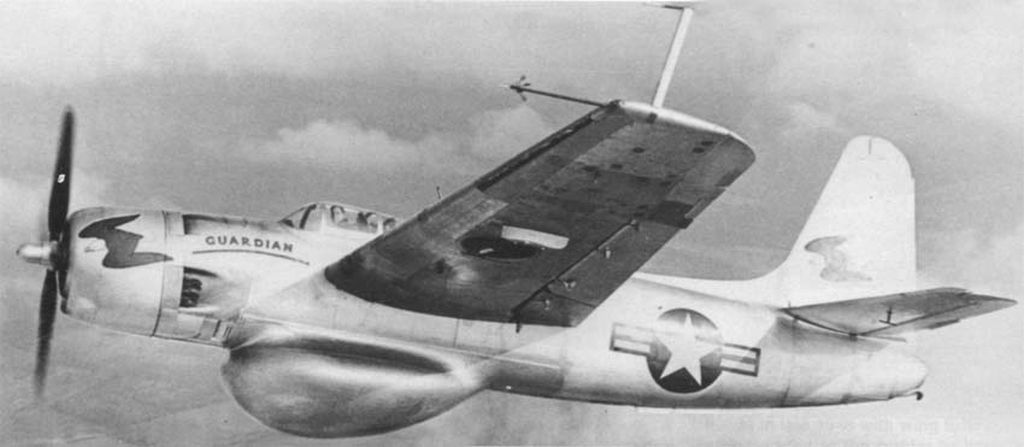
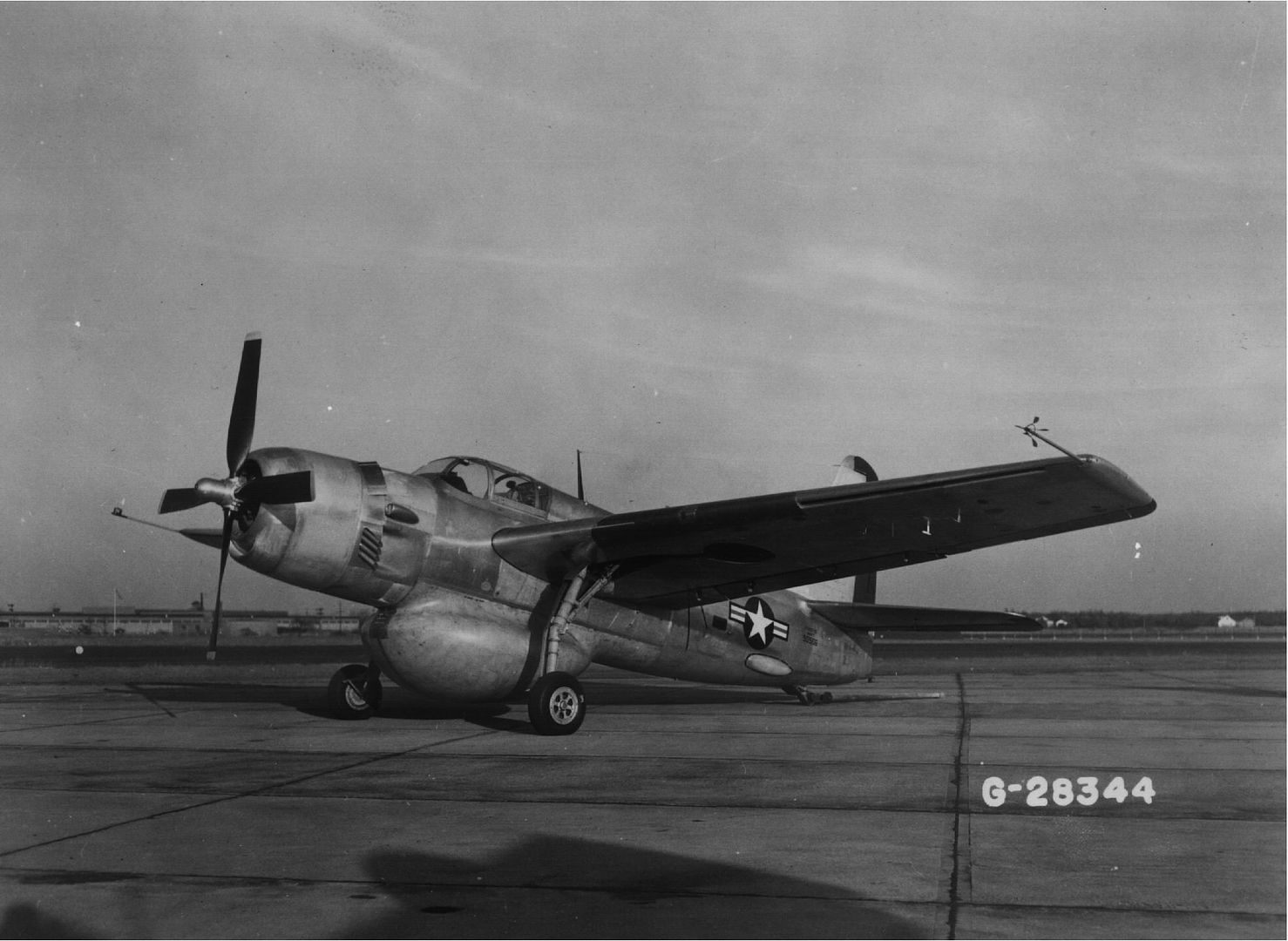
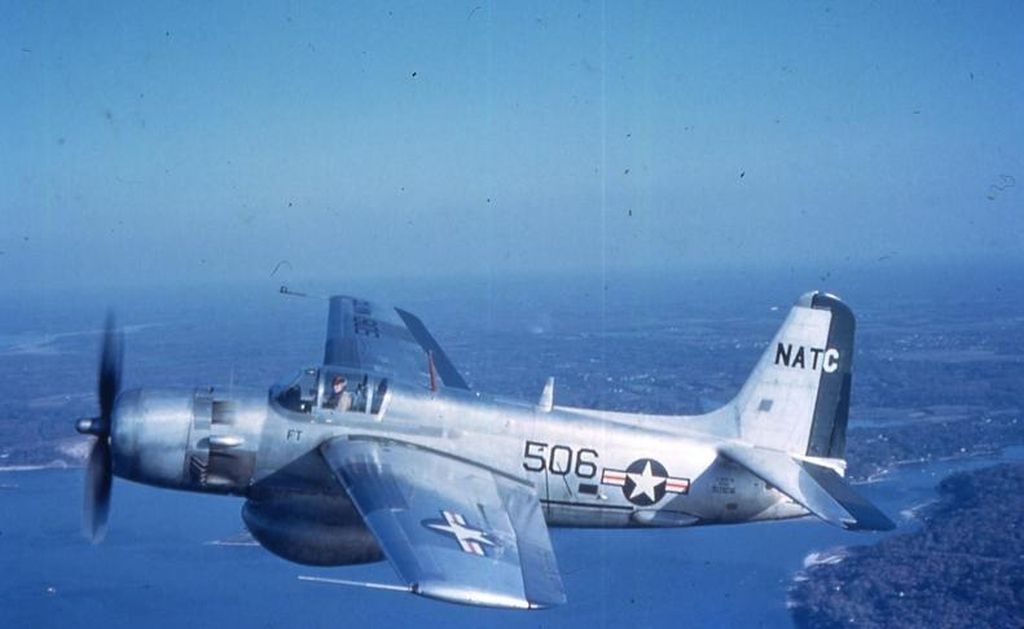
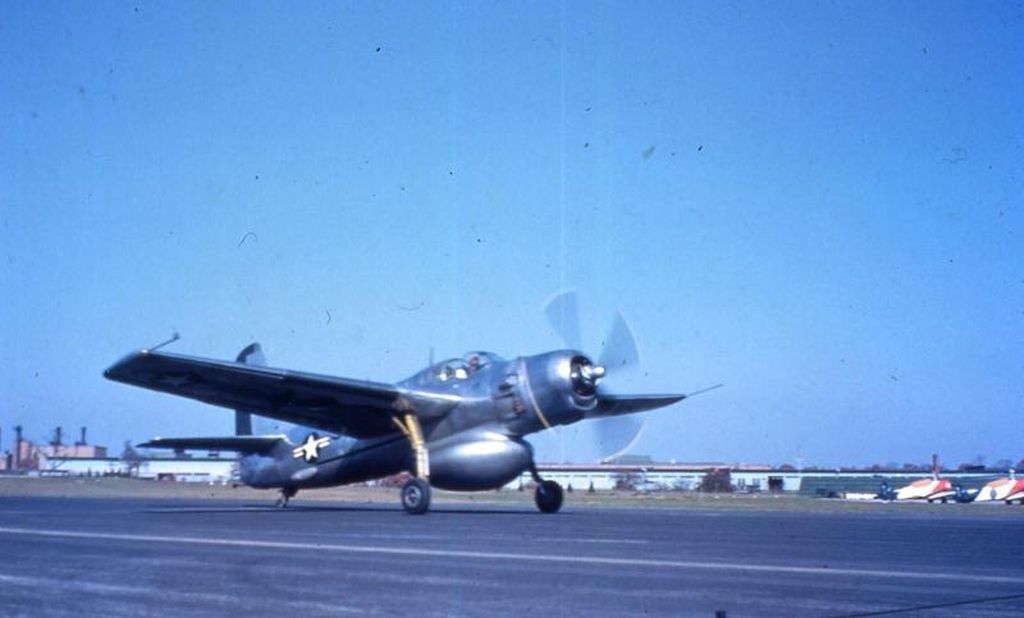
By this time, the Guardian had already been ordered into production. The XTB3F-1S "hunter" was built as "AF-2W" (originally "AF-1S"), and the XTB3F-2S "killer" was built as the "AF-2S". The first production AF-2S Guardian flew on 17 November 1949. Qualification trials were conducted from May 1950 through November 1951, with the first operational aircraft going into service in October 1950.
* The Guardian was a brute of an aircraft, said to be the biggest single-engine piston aircraft ever flown by the US Navy. It was driven by a P&W R-2800-48W Double Wasp radial engine, providing 1,790 kW (2,400 HP) to an oversized four-bladed propeller.
The aircraft had tailwheel landing gear, the main gear retracting outward into the wings and a stinger-type arresting hook aft of the tailwheel. It had wide-span mid-mounted wings that folded back towards the tail in classic Grumman fashion, outside of the main landing gear. The tail was of conventional configuration, except for secondary vertical "finlets" mounted a little beyond the midpoint of each tailplane.
The AF-2W "hunter" or "guppy" member of the team had a crew of four and was unarmed, though it could carry underwing drop tanks, and had a large radome for the AN/APS-20 search radar mounted on the belly under the cockpit. The finlets were to provide lateral stability, which was affected by the radome. 153 AF-2W Guardians were built.
The AF-2S "killer" or "scrapper" member of the team had a crew of three and could carry up to 1,800 kilograms (4,000 pounds) of munitions, including depth charges, bombs, or a homing torpedo in the bombbay; fuel tanks or other stores on an underwing pylon inboard on each wing; and six 12.7 centimeter (5 inch) "high velocity air rockets (HVARs)" mounted on underwing stubs. It could also drop sonar buoys ("sonobuoys"), either from the bombbay or from an underwing pod. The AF-2S mounted AN/APS-30 targeting radar in a pod under the right wing and a searchlight in a pod under the left wing. The AF-2S retained the tail finlets -- though whether they were actually necessary or were simply there to ease production is an interesting little question. 193 AF-2S Guardians were built.
Below AF-2 cockpit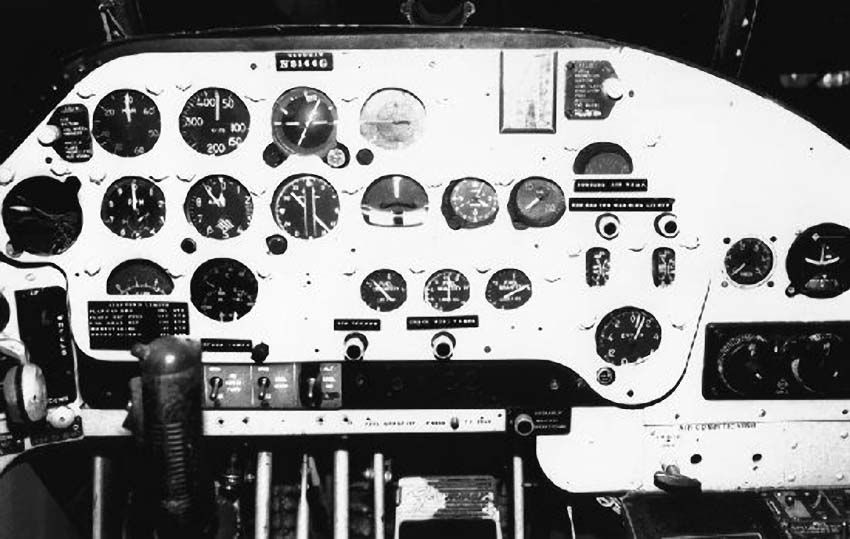
Below AF-2W/S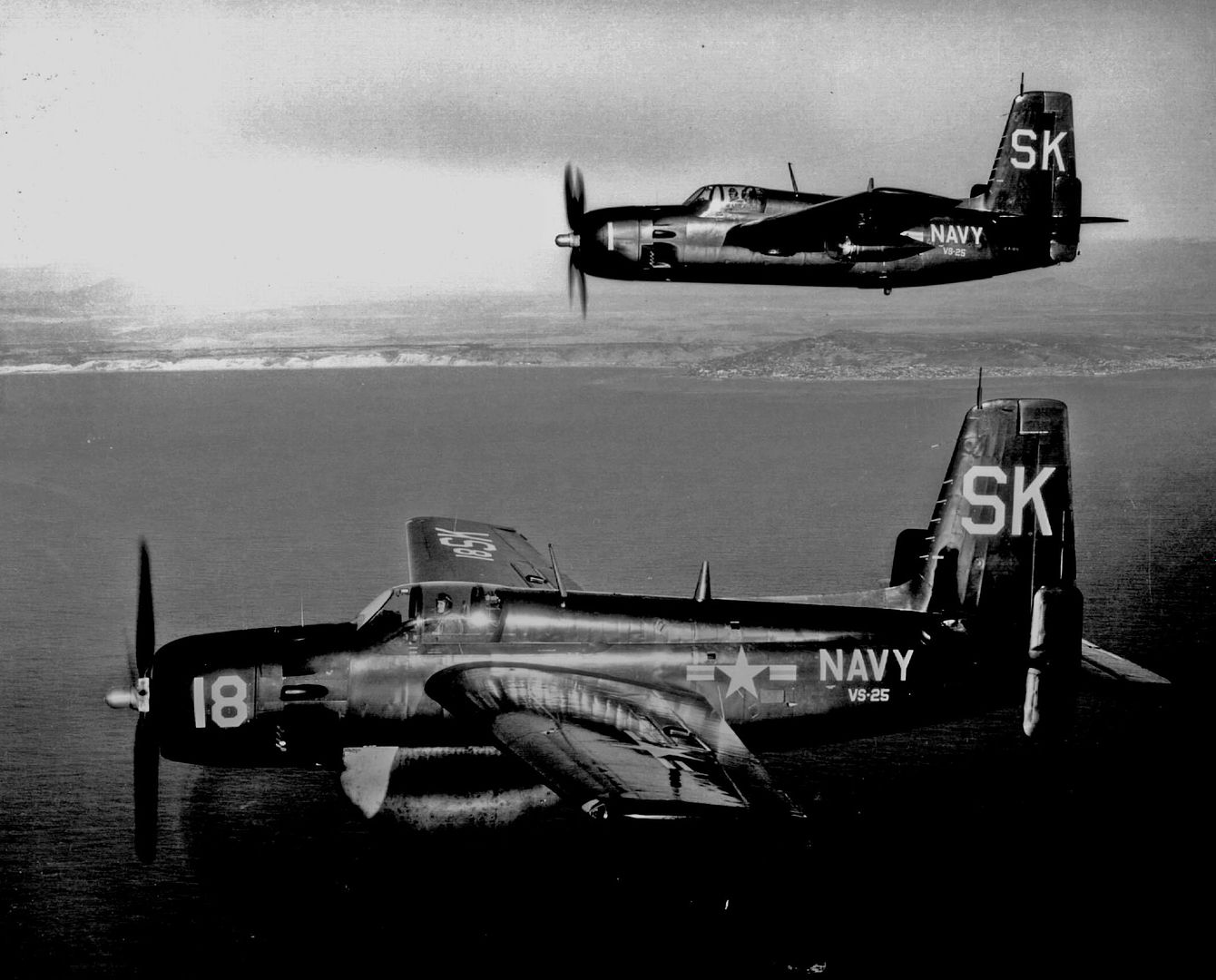
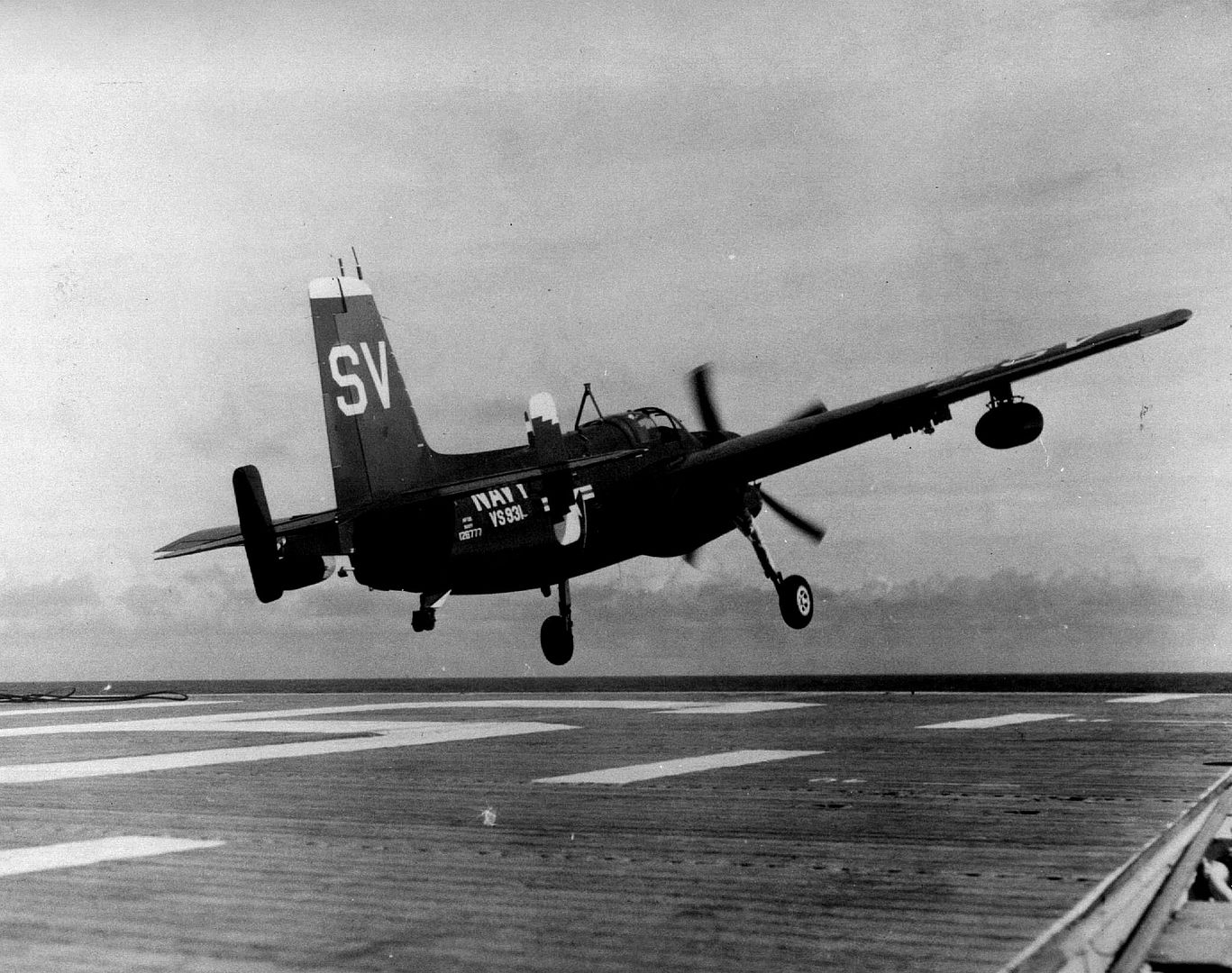
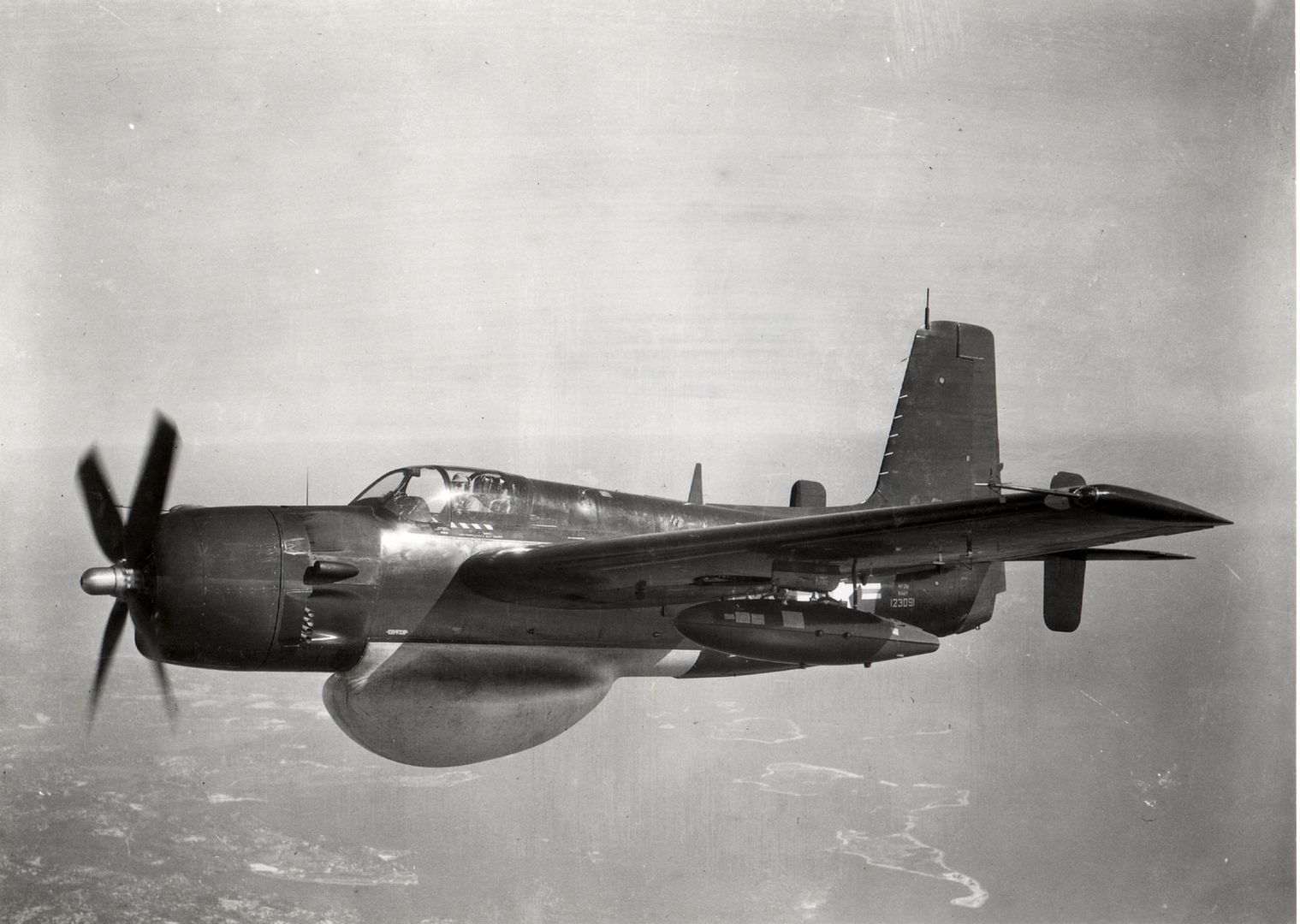
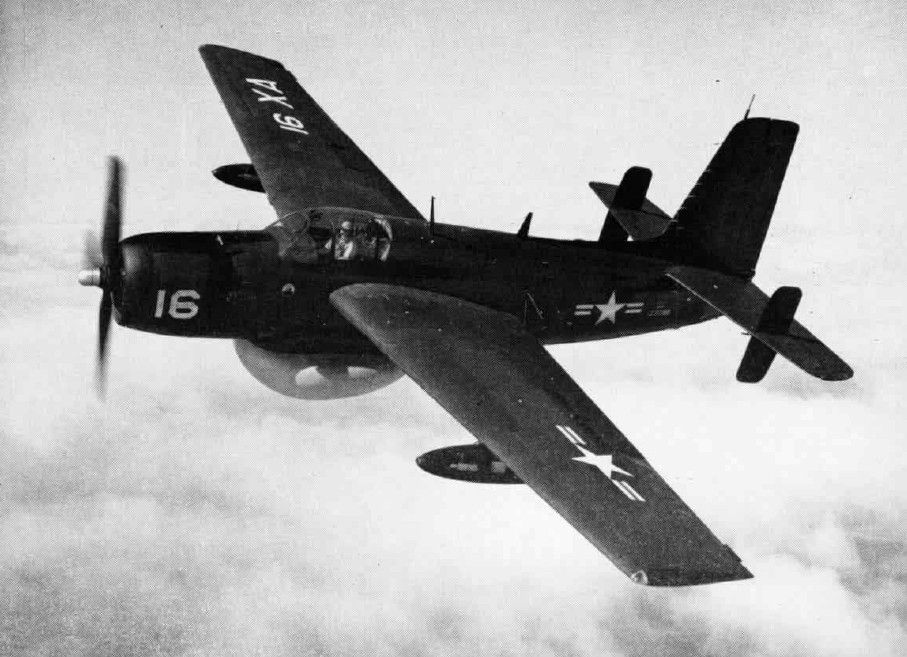

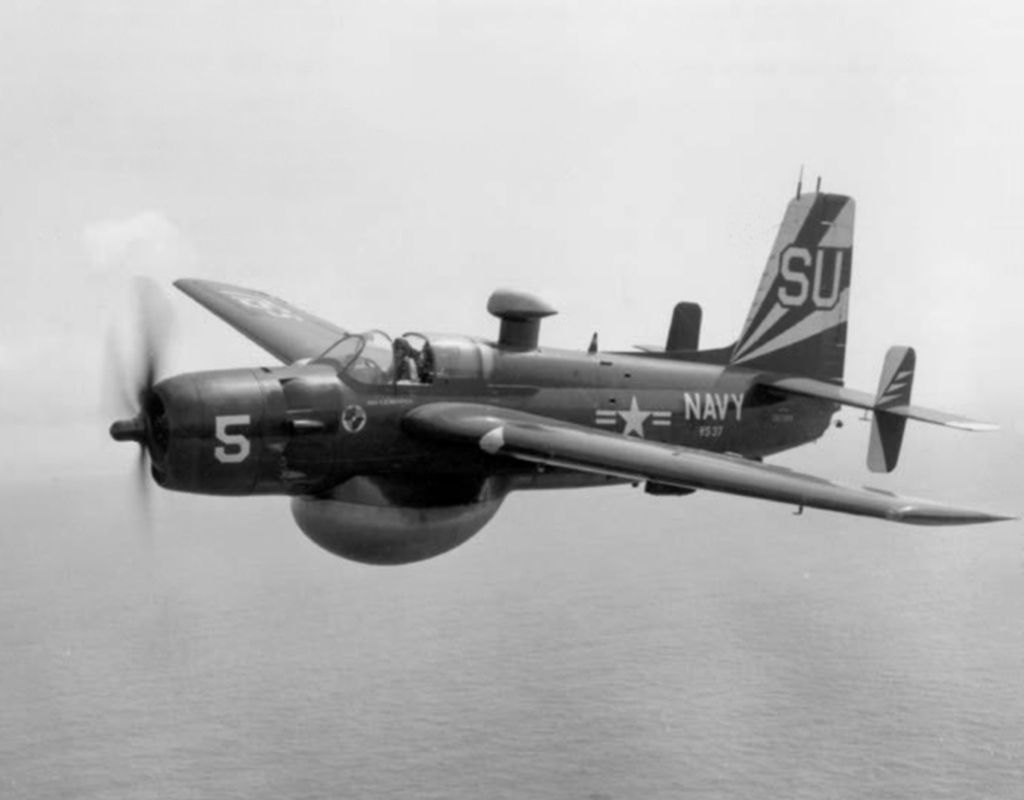
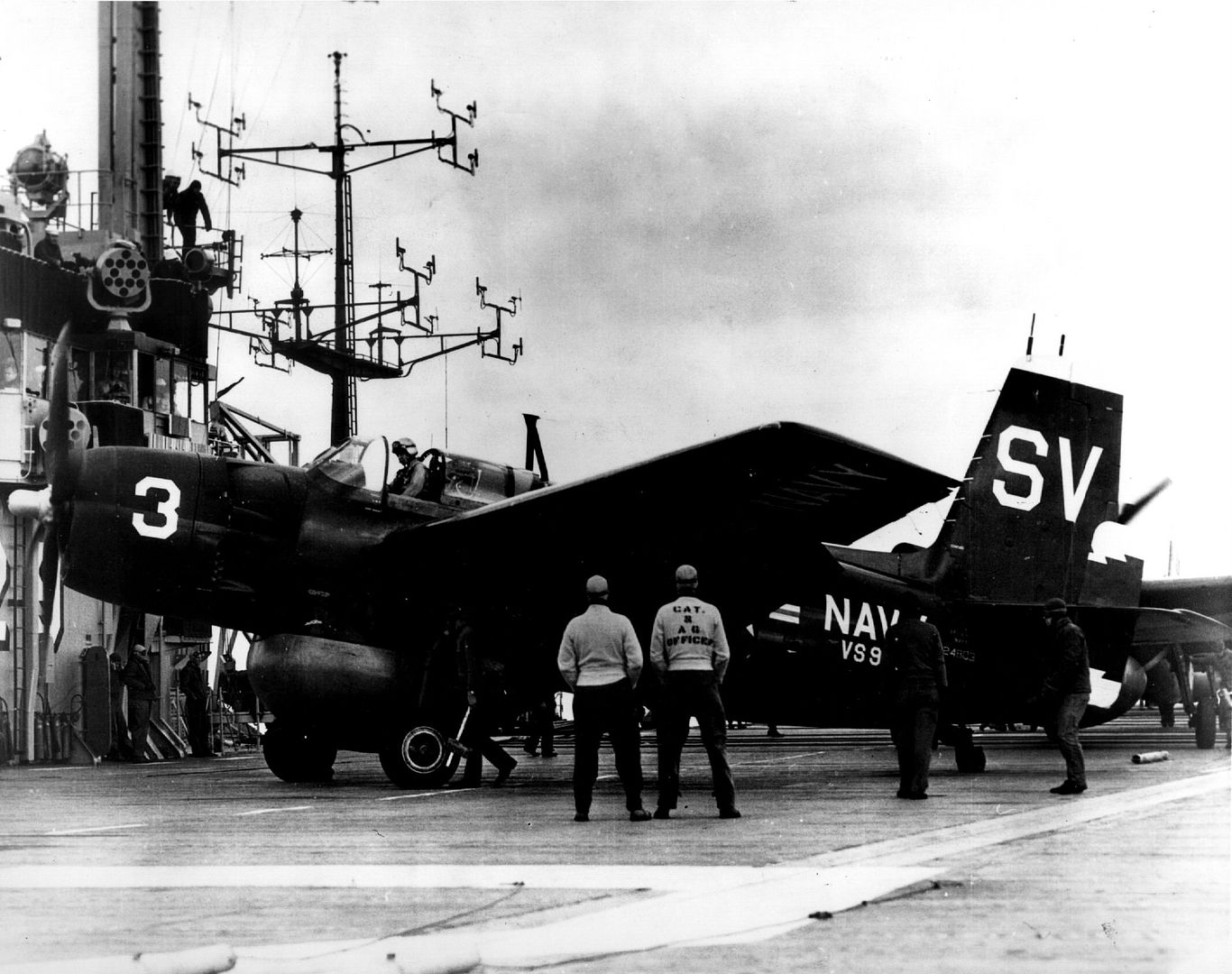
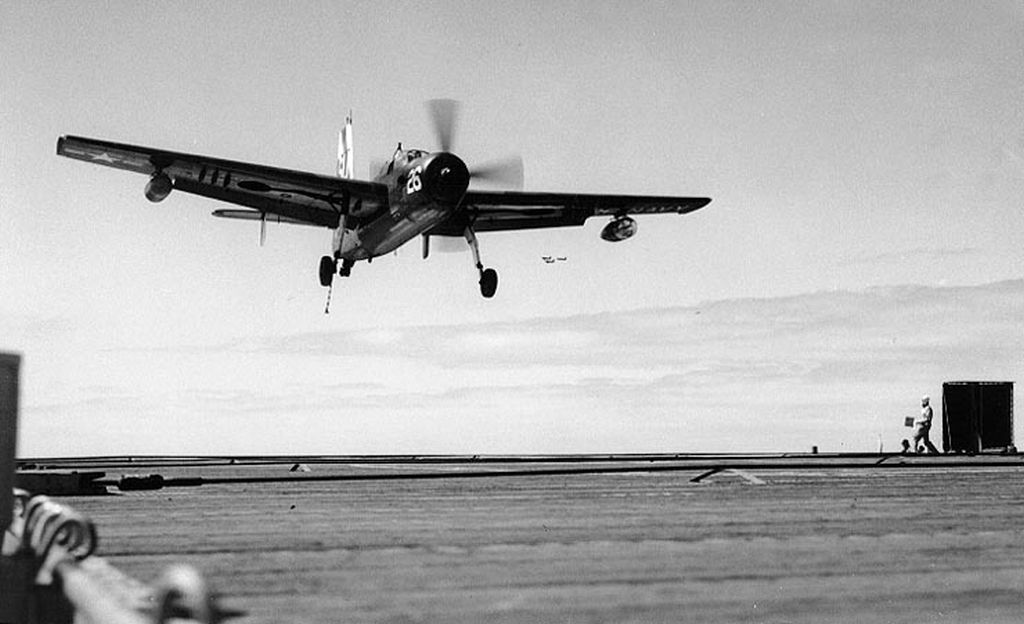
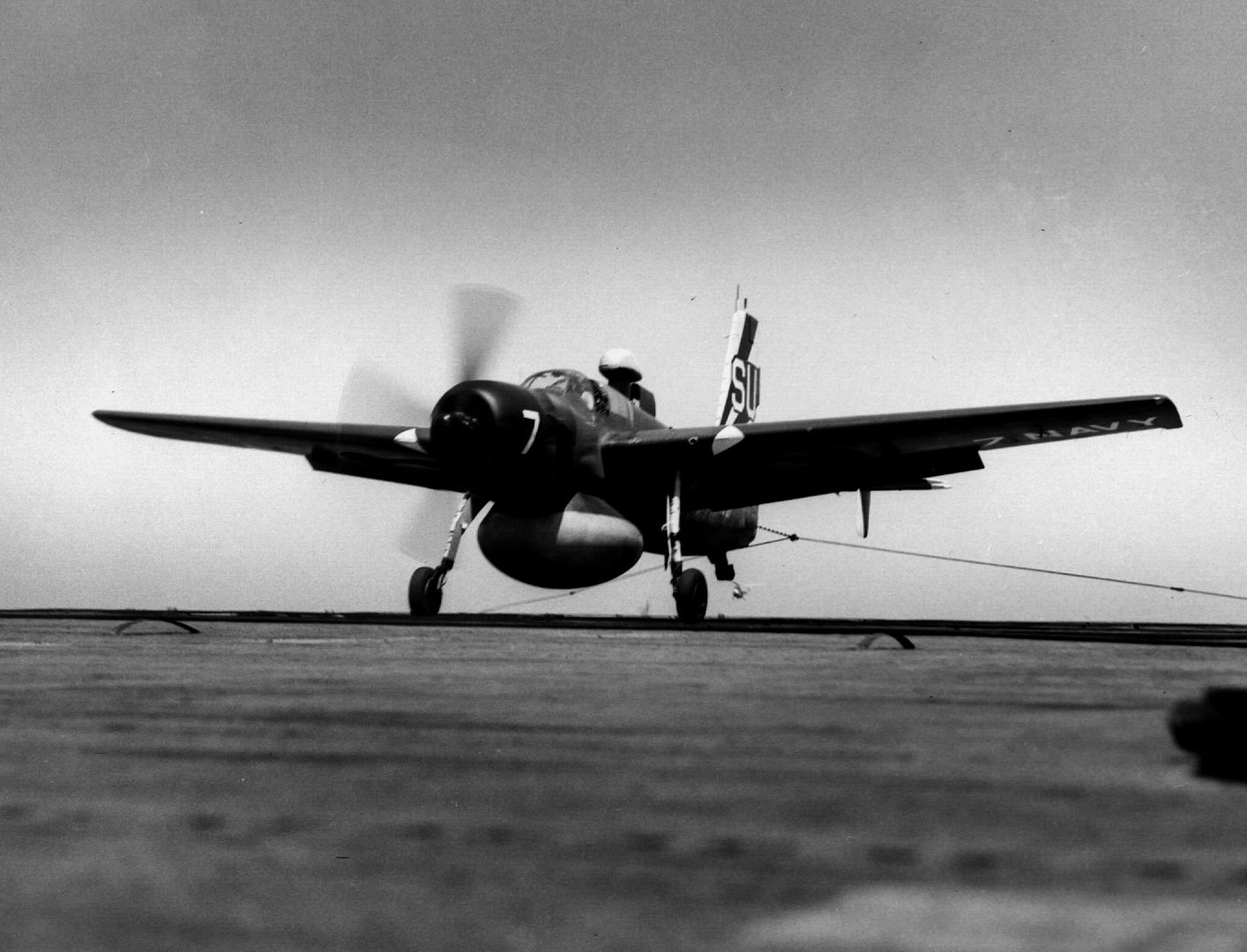
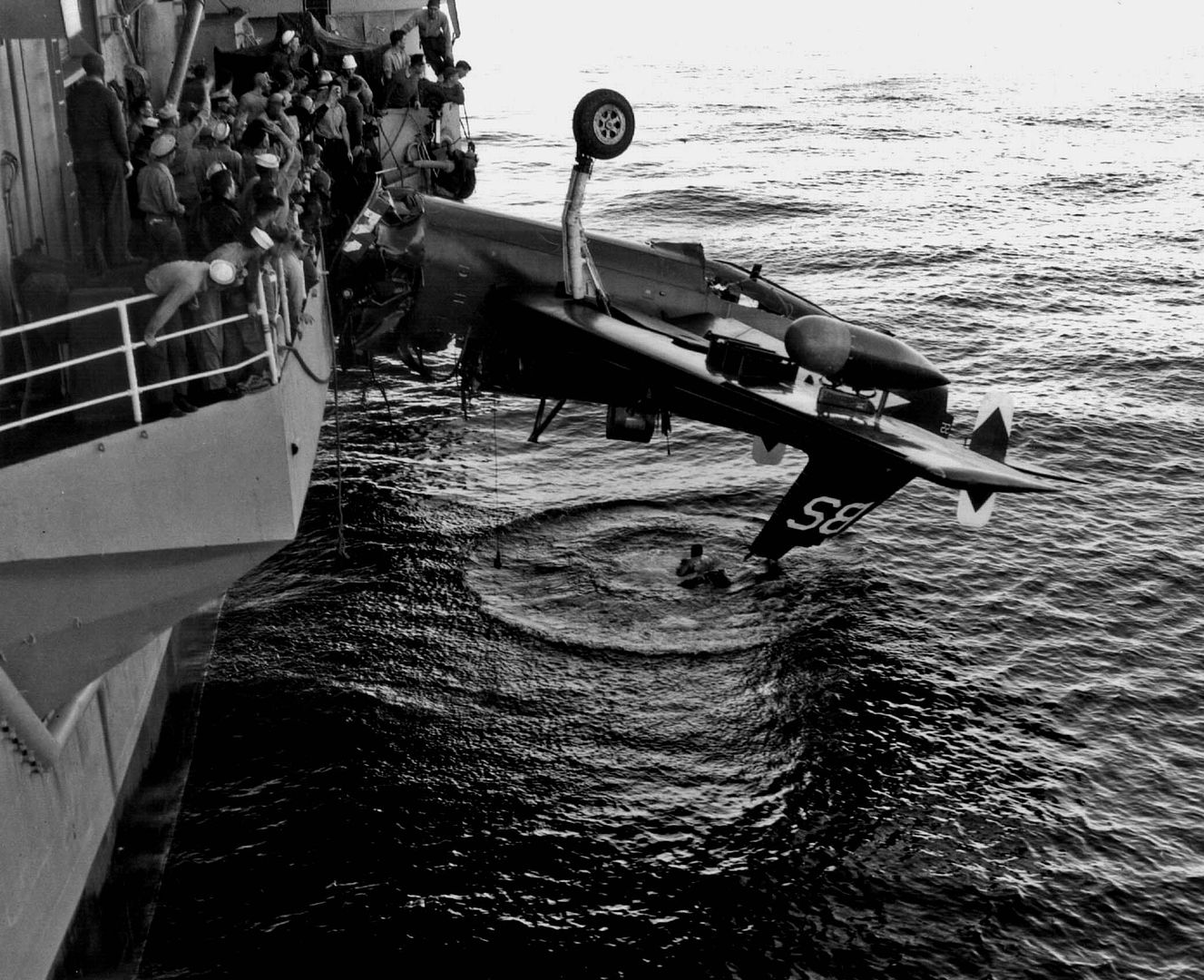
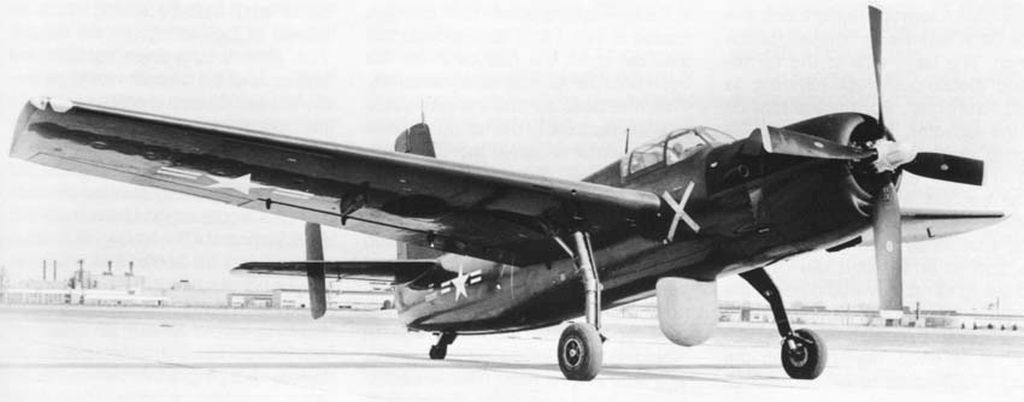

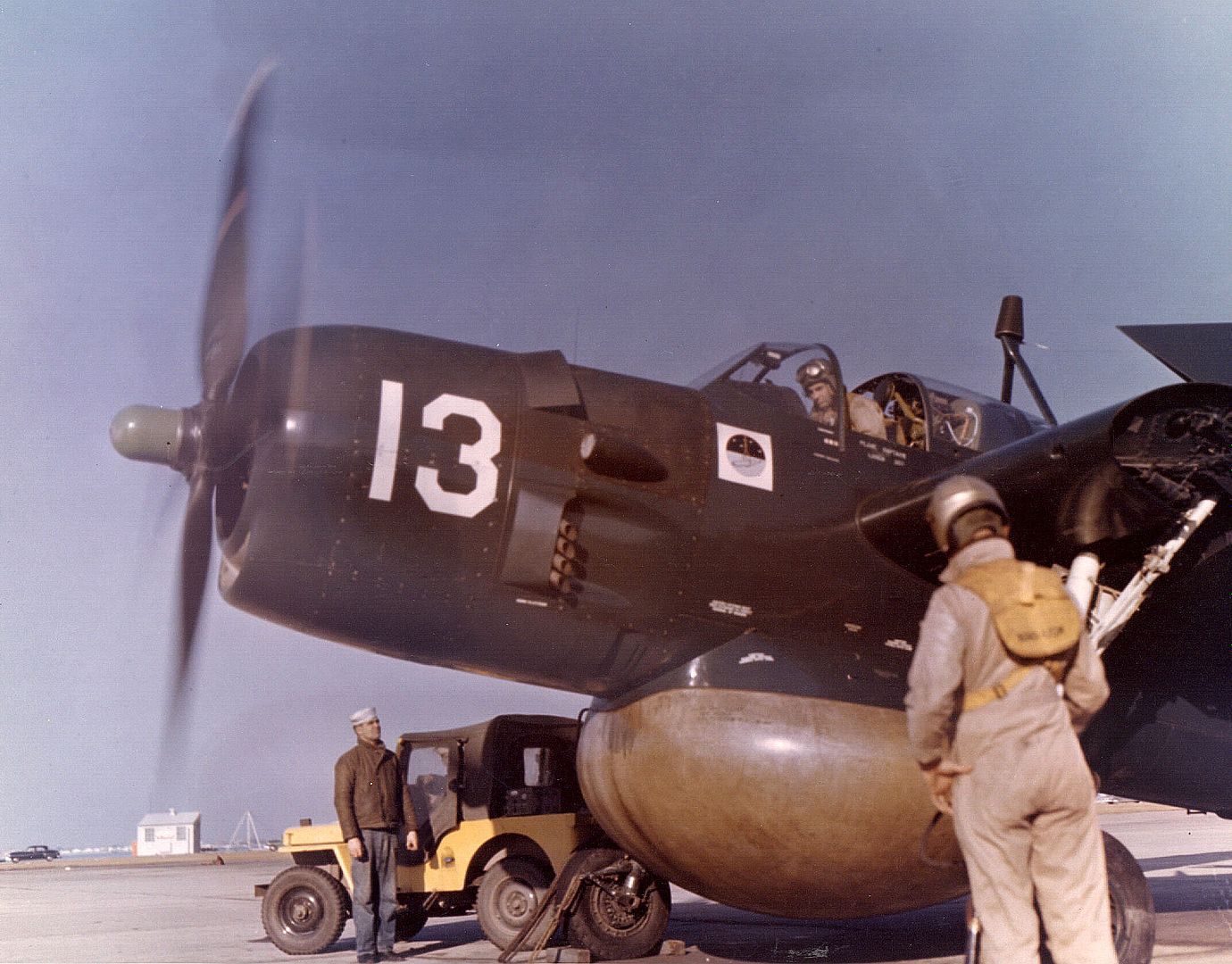
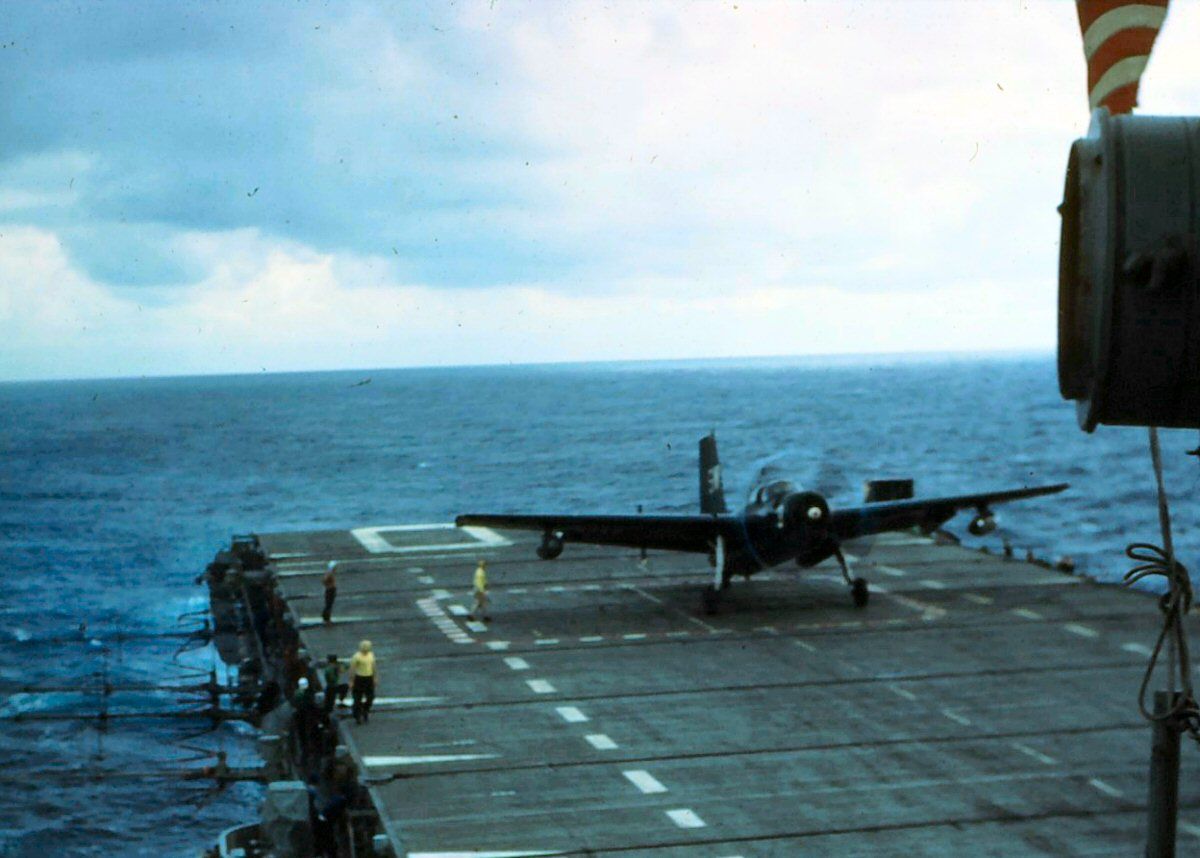
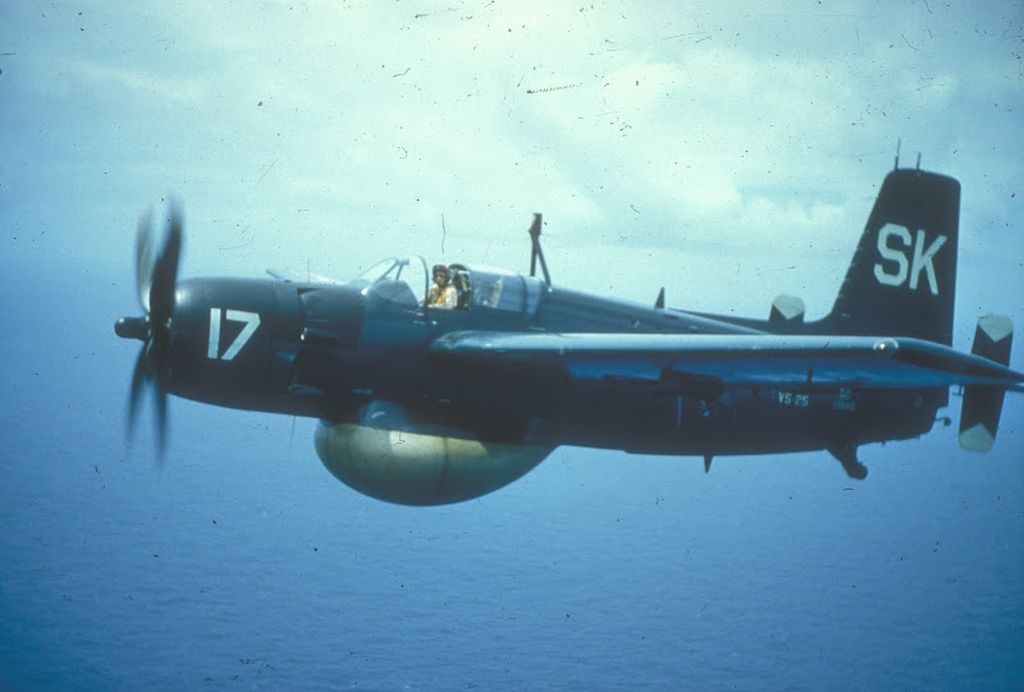
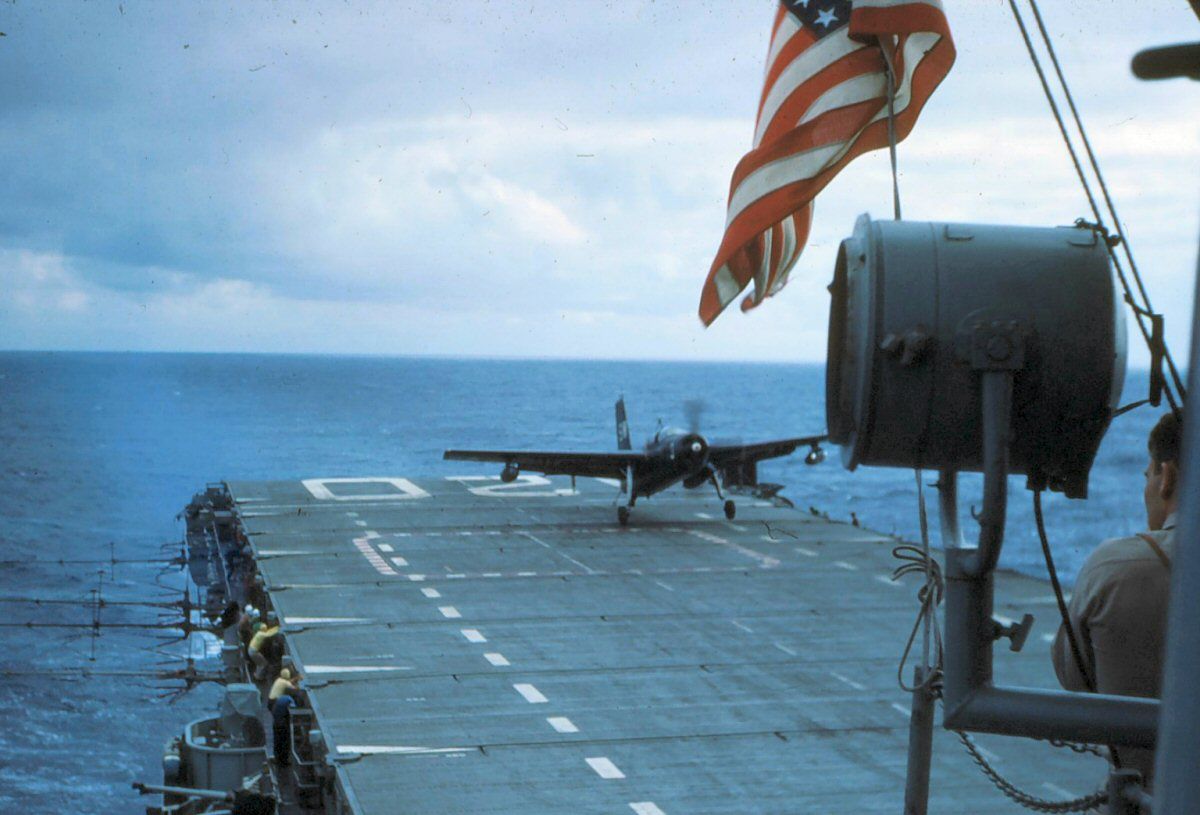
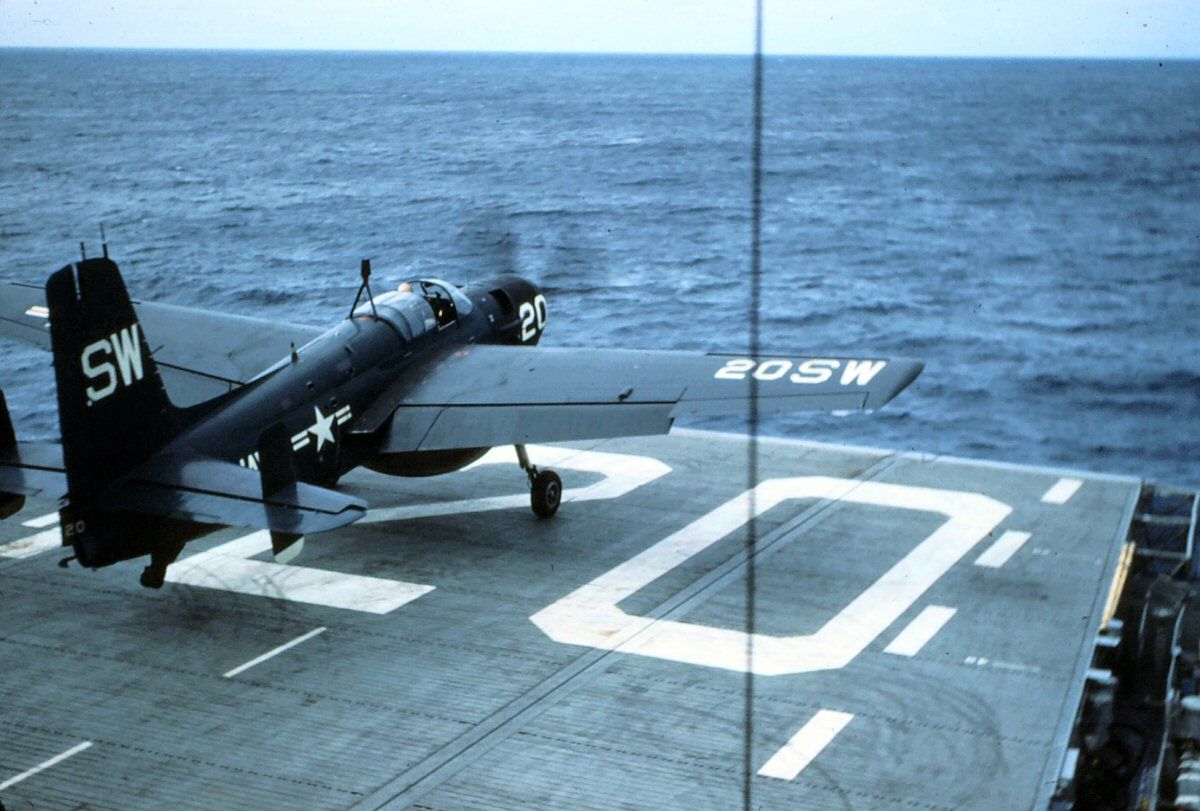
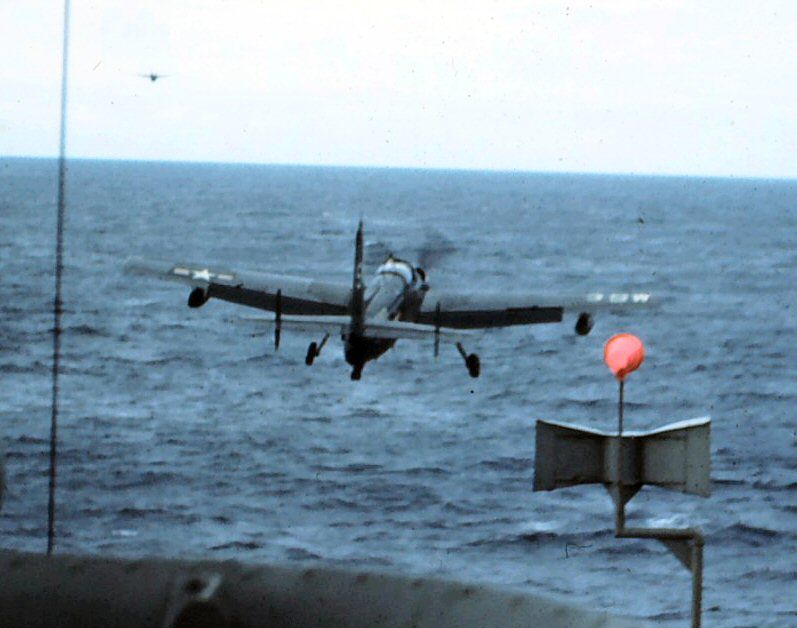

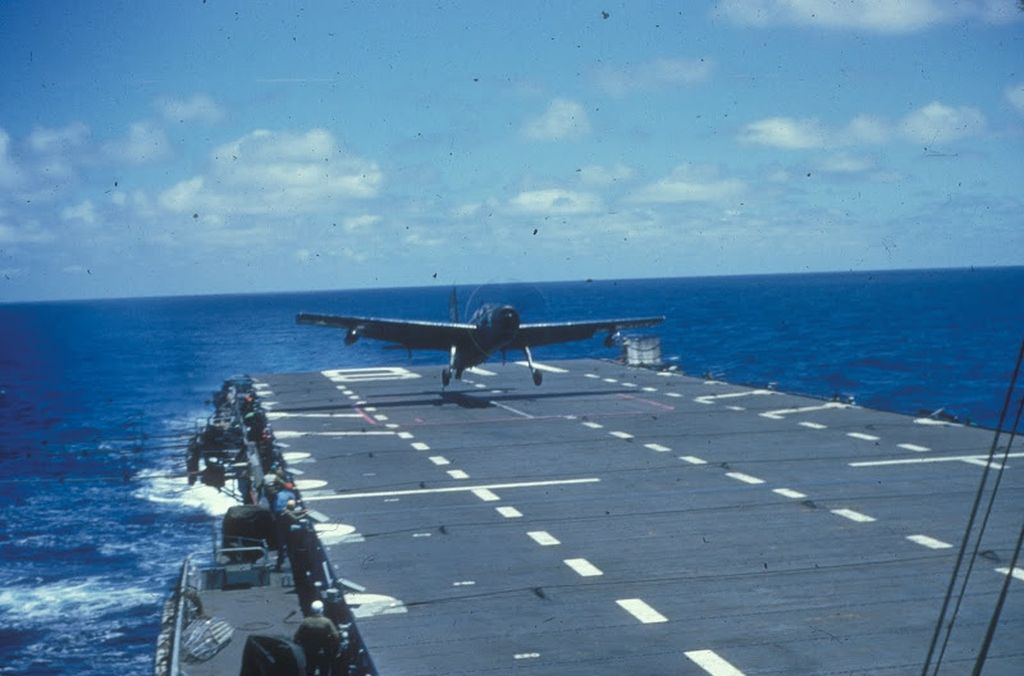


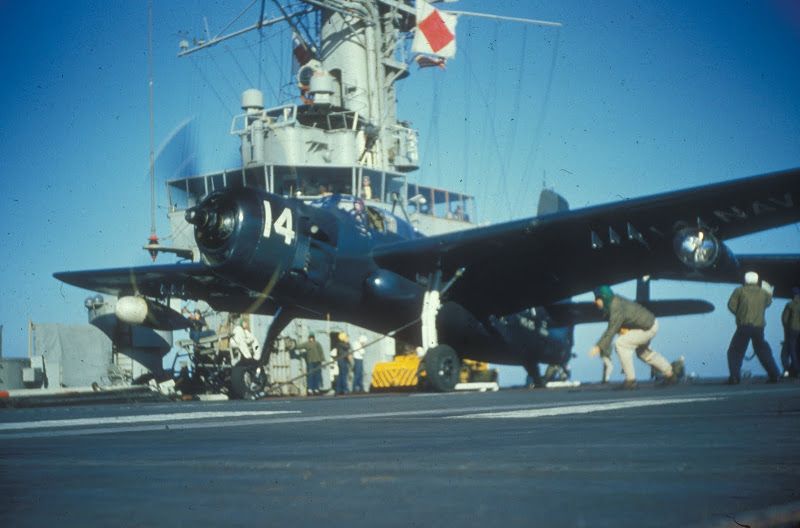
A second version of the AF-2S hunter was built beginning in 1952, featuring "magnetic anomaly detector (MAD)" gear with a boom that extended from a fairing mounted on the right side of the rear fuselage. The MAD gear greatly improved the Guardian's ability to find and track subs. This variant was designated the "AF-3S", and 40 were built. The last Guardian was rolled out in March 1953, with a total of 389 of all variants built, including the prototypes.
The Guardian was somewhat underpowered, an unfortunate feature for a carrier aircraft that had to make short takeoffs, and its pilots found its controls heavy. Its accident rate was on the high side -- by modern standards the unacceptably high side, but in an era when combat aircraft were cheaper and more common, accident rates that would be completely outrageous now were regarded as acceptable.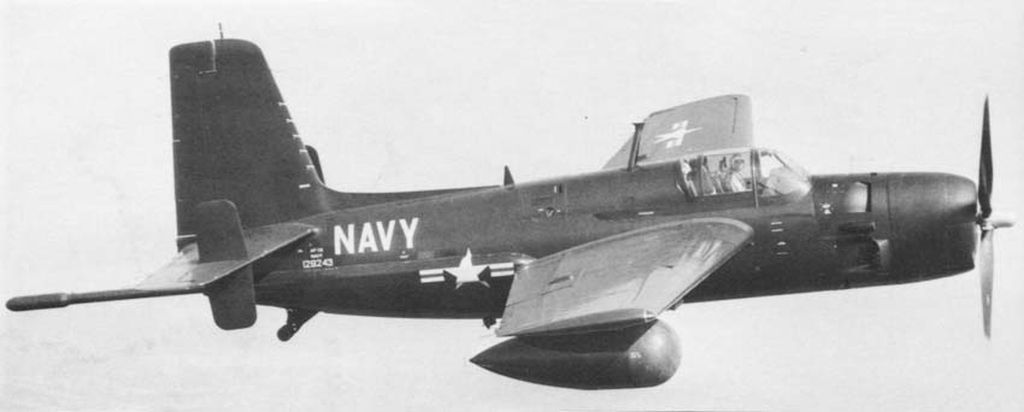
Although the Guardian conducted war patrols in Korean waters from March 1951 through May 1953, it did not remain in service for long after that. With the last Guardian was retired from first-line service on 31 August 1955. Guardians remained in service with Navy Reserve squadrons into 1957. A number of Guardians ended up in civilian hands and were often used as "water bombers", with a water / retardant tank in a ventral tub, and some of these aircraft are now on static display in museums. For example, one AF-2S is on show at the Naval Aviation Museum in Pensacola, Florida. It appears no Guardians remain in flight worthy condition.
GRUMMAN AF-2S GUARDIAN:
_____________________ _________________ _______________________
spec metric english
_____________________ _________________ _______________________
wingspan 18.5 meters 60 feet 8 inches
wing area 51 sq_meters 549 sq_feet
length 13.2 meters 43 feet 4 inches
height 4.93 meters 16 feet 2 inches
empty weight 6,615 kilograms 14,580 pounds
max loaded weight 11,340 kilograms 25,000 pounds
maximum speed 507 KPH 315 MPH / 275 KT
service ceiling 9,900 meters 32,500 feet
range 2,415 kilometers 1,500 MI / 1,305 NMI
_____________________ _________________ _______________________
-
 AdminAh, the wacky and weird days of 1950s aviation!
AdminAh, the wacky and weird days of 1950s aviation!
Post a reply
- Go to Previous topic
- Go to Next topic
- Go to Welcome
- Go to Introduce Yourself
- Go to General Discussion
- Go to Screenshots, Images and Videos
- Go to Off topic
- Go to Works in Progress
- Go to Skinning Tips / Tutorials
- Go to Skin Requests
- Go to IJAAF Library
- Go to Luftwaffe Library
- Go to RAF Library
- Go to USAAF / USN Library
- Go to Misc Library
- Go to The Ops Room
- Go to Made in Germany
- Go to Campaigns and Missions
- Go to Works in Progress
- Go to Juri's Air-Raid Shelter
- Go to Campaigns and Missions
- Go to Works in Progress
- Go to Skinpacks
- Go to External Projects Discussion
- Go to Books & Resources
